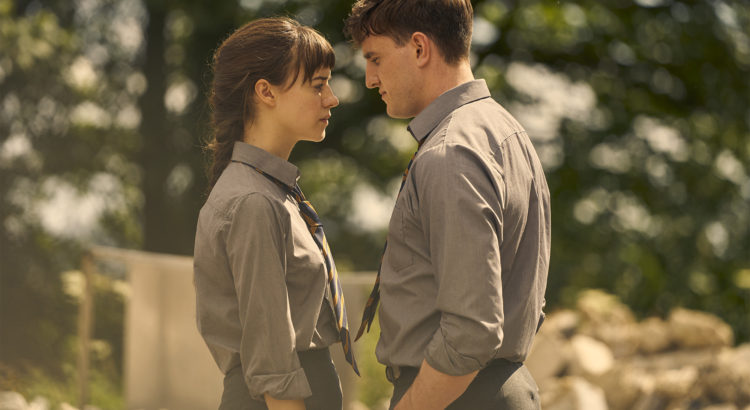Based on Sally Rooney’s award-winning novel, “Normal People” is set to premiere as a limited television series April 29th on Hulu. “Normal People” follows Connell and Marianne’s intrinsic attraction towards each other through their high school and college careers. Rooney’s novel is fueled by passion, trauma, and the most unusual power struggle between the will-they-won’t-they couple. Daisy Edgar Jones plays the Marianne to Paul Mescal’s Connell. The entire series, comprised of twelve episodes, will be available to watch on Hulu Wednesday, April 29th.
Tag: Film
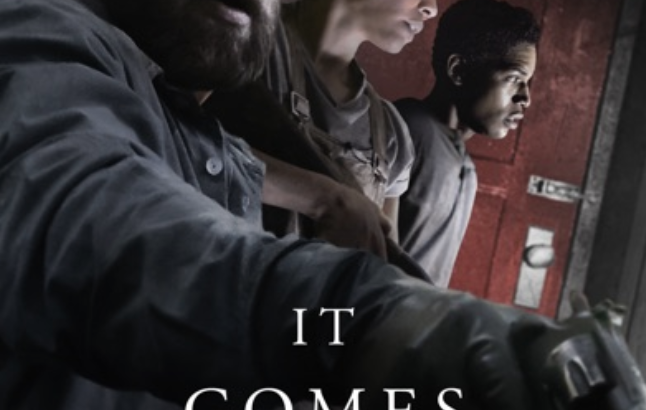
REVIEW: It Comes At Night
Why is legitimate talent wasted on awful screenplays?
Chuckling a little to myself, I chose thriller about a mysterious disease that forced families to isolate themselves from outsiders. I figured I’d finally be on the edge of my seat after weeks of watching painfully monotonous news coverage of minutely different facets of the same story. Turns out I was in for the same kind of boredom I had grown accustomed to in the past couple of months.
Horror movies (and increasingly, even the most confidently-labeled “cerebral” thrillers) have long been a genre that works with the same materials to build a plot. They use the same monsters, the same dialogue, the same archetypal characters. It is so dreadfully rare to find a horror movie that doesn’t settle for mining the same types of basic fears assumed to be common to all human beings. Sure, writers could start there for some aspects of their work, but all too often they also refuse to go further. The next time I see another humanoid, tall, skinny shadowy figure drooling black goo from its mouth in a movie, I’m going to lose it, and not in the intended way. 
So anyways, this movie is about a family lucky enough to own property a long ways from the densely-populated city during a mass infection event of some mysterious disease. Already, the lack of context bugged me: where in the sam hill is this house located? Who is this family? What is this disease? How long has it been around? What has its global impact been? I kept waiting for the first rule of science fiction to be honored (a logical explanation of the way the world works in the story), but it never was. While some might argue that the vagueness adds to the scariness of the disease, to me it’s an excuse for lazy writing. There is such little substance in the world building the writers do that it distracts from whatever level of terror I’m supposed to be feeling, and replaces it with annoyance.
Though I shouldn’t have been surprised by the outdated, patriarchal family structure in the movie, I was. The dichotomy between femininity and masculinity was incredibly strong; it was made abundantly clear that the men were protectors, women were caregivers (and meant to be protected), and that these strict roles should be considered ideals. Men made decisions, and women made comments that could easily be dismissed. This is terribly common in horror, pulling on the legacy of the old days of female victimhood (King Kong, Creature From the Black Lagoon, etcetera, etcetera, etcetera). I’d thought we’d made it a little further past that. It’s almost like we need more female horror screenwriters. 
Going into the horror/thriller genre should not be a shortcut into movie making for unimaginative writers. There are some who are raising the standards, like Ari Aster (Midsommer), Julia Ducournau (Raw), and Yorgos Lanthimos (The Lobster, Dogtooth), but it isn’t enough yet to discourage the countless carbon copies of a basic slasher flick. Still, the future looks bright.
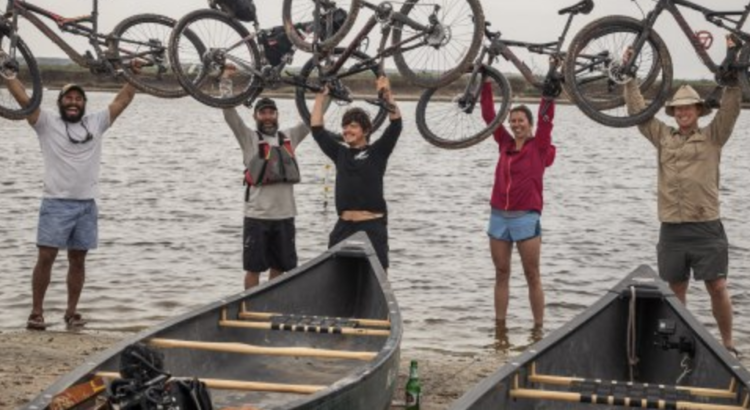
REVIEW: Film Screening: The River and The Wall
“Building a wall from sea to shining sea is the most expensive and least effective way to do border security.”
-Will Hurd, Republican Congressman of Texas
A politicized landscape can be both metaphorical and physical. We preoccupy ourselves with the issues, and the solid ground they concern disappears. But for all those who benefit from this space–wildlife, nature enthusiasts, fishers,–forgetting is impossible. The land is sacred, life-giving, the means for making a living. Politicians in faraway places decide what happens, unaffected by the cascading effects a complete wall would have on the life here.
 Important populations which have historically struggled to survive are put at risk by Trump’s border wall. Black bears and mountain lions, just coming back from local near-extinction, will suffer geographic isolation, decreasing genetic diversity and weakening the populations’ ability to withstand disease or other destructors. The meandering nature of the Rio Grande and the unrelenting straight edge of the wall necessitates a wide swath of no man’s land by the river, unjustly punishing local landowners and workers. The US side will lack the river, along with its aesthetic, spiritual, and bodily supportive value.
Important populations which have historically struggled to survive are put at risk by Trump’s border wall. Black bears and mountain lions, just coming back from local near-extinction, will suffer geographic isolation, decreasing genetic diversity and weakening the populations’ ability to withstand disease or other destructors. The meandering nature of the Rio Grande and the unrelenting straight edge of the wall necessitates a wide swath of no man’s land by the river, unjustly punishing local landowners and workers. The US side will lack the river, along with its aesthetic, spiritual, and bodily supportive value.
It’s impossible not to draw a connection from this to Robert Moses’ tyrannical reconstruction of New York during the mid-20th century. Caring not for the residents of its “slums” (read: people of color, the impoverished, undesirable white ethnic groups), he cut straight through with expressways and less-than-affordable new public housing. Rich, dense communities were reduced to identical buildings cut off from the rest of the city. The cultural and physical landscape of their old home had completely changed. He, like the Trump administration, was detached from the people he affected, and in this he lacked the knowledge and empathy necessary to be a leader of that kind. 
The river is our equalizer between us and our neighbors. A source of life, a means of survival and emotional wellbeing. The alluvial river plains, fertilized by upwelling of rich sediments during floods, are extremely productive areas. Losing out on this agricultural resource would be disastrous for farmers and the communities they support.
What bothered me about this documentary was the clearly elevated position on which its subjects stood. It really was not an accurate approximation of a migrant’s dangerous journey. They’re equipped with strong horses, expensive bikes and hiking gear, nice canoes. They are all young, in good health, physically strong. All the methods of transportation the five used (bikes, horses, canoes) are physically taxing. The film failed to bring up the unique dangers that elderly migrants face on their way, and also children, pregnant women, the ill. That side of the issue is an even darker facet, and it should be represented here.

Luckily, the film was able to balance the tragedy of our likely future with the joys of past and present. The cinematography was graceful and rugged at once, the environment lending itself to an exploration of the simultaneous existence of fear and awe. It seems to reflect a migrant’s experience because of that.
The ending was too idyllic for my taste, a little too naively hopeful. We see little direction for viewers to seize and act from. Emotion alone is not enough to argue against the political situation in which we find ourselves.
This website is a great resource for investigating what you can do.
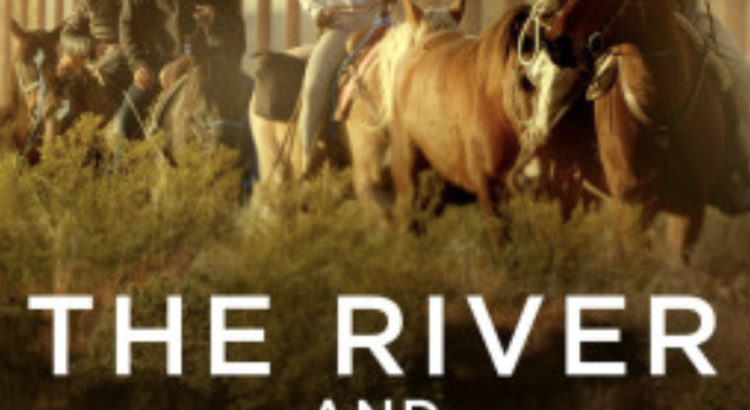
PREVIEW: The River and The Wall
Free movie screenings truly are a gift to all, especially when they hit mid-week, the toughest time to get through. And with The River and The Wall, we’ll even learn a little something about the world.
The film follows the experience of five friends realizing just how impactful the in-progress U.S.-Mexico border wall truly is. It combines elements of philosophy, environmental science, politics, and human nature seamlessly, showing us exactly how interconnected such disciplines can be.
Head down tomorrow, Wednesday, February 19, 6 PM to the Gallery in Hatcher Graduate Library to watch with me. It isn’t confirmed, but there will likely be some snacks provided. Just in case, I’ll be bringing my favorite pretzels and some dark chocolate to enjoy.
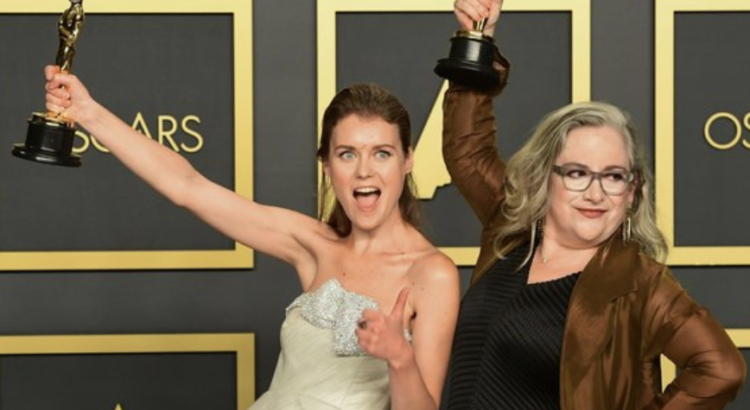
REVIEW: Oscar Nominated Shorts: Documentary
Not the most uplifting selection of shorts, but these five documentaries were certainly thoughtful and artistic.
They combined beauty with a quiet sadness in the background that came forward only in brief moments. We are offered such an intimate look into personal tragedies and journeys in
 this group of films, and that doesn’t always feel completely right. In Life Overtakes Me especially, we observe several refugee children caught in the coma-like state of Resignation Syndrome; they are unaware at that moment of our watching them being taken care of like invalids. The cool, pretty sunlight comes through the window to highlight a delicate hand, the rising and falling of the chest filling with unconscious breath. Their parents are filmed almost as a performance of parenthood, having to ignore the cameras’s eye and the incredible pain of not knowing–their family’s refugee status, whether their child will regain consciousness, what would happen if they were deported. It feels like an intrusion, something I don’t deserve to see.
this group of films, and that doesn’t always feel completely right. In Life Overtakes Me especially, we observe several refugee children caught in the coma-like state of Resignation Syndrome; they are unaware at that moment of our watching them being taken care of like invalids. The cool, pretty sunlight comes through the window to highlight a delicate hand, the rising and falling of the chest filling with unconscious breath. Their parents are filmed almost as a performance of parenthood, having to ignore the cameras’s eye and the incredible pain of not knowing–their family’s refugee status, whether their child will regain consciousness, what would happen if they were deported. It feels like an intrusion, something I don’t deserve to see.
Walk Run Cha-Cha was the most light-hearted of the five, though it was also the only one that made me cry. Ageism, particularly with women, is strong in the film industry, so I was happy to see an older couple featured in a way that connected them to their bodies and to each other. Too often mature subjects are discounted in their sensuality and ability, instead cast aside as static figures who do not (implied: cannot)
 offer anything but old-fashioned wisdom, always from a seated position. They have less
offer anything but old-fashioned wisdom, always from a seated position. They have less
 agency than their younger counterparts, often in a position of needing someone to take care of them. In Hollywood’s eyes, life seems to end somewhere around 35, maybe 50 for men.This shows that as we age there is still plenty more room for learning, for joy, for romance.
agency than their younger counterparts, often in a position of needing someone to take care of them. In Hollywood’s eyes, life seems to end somewhere around 35, maybe 50 for men.This shows that as we age there is still plenty more room for learning, for joy, for romance.
St. Louis Superman was touching without letting the audience forget its reality of systematic, racially-charged violence. The incorporation of Franks’ young son King was simultaneously beautiful and heartbreaking (he learns so much so young: his father’s bravery, the effect that one’s drivenness can produce, the hypocrisy of institutions meant to protect, how deeply racism permeates those structures). His innocent eyes take in too much, and as we see him cling fiercely to his father, we’re forced to wonder whether his future will be painted more by cynicism or tenacity. 

In the Absence seemed the most abstract. We see almost no video of the passengers of the ferry, which makes sense as most of their phone recordings were destroyed as the ship sank. A large portion of the documentary featured the slowly tilting boat, a big beast of a structure, looking like a dying creature, maybe a whale. It brings to the mind a guilty kind of disgust; we’re meant to be second-hand mourners, but instead we see the government’s ineptitude and this huge, ugly thing taking its sweet time drowning hundreds trapped on board.
Finally is the documentary shorts winner: Learning to Skateboard in a Warzone (If You’re a Girl). The movie was  a well-thought-out mix of history, interview, and politics, while getting closer to the heart through a close connection to a group of talented, spunky young girls. In a land that does not allow for any of the activities depicted in the film, it would have been more accurate to incorporate a touch more seriousness here, rather than depicting Skateistan as a magical safe haven. The point was empowerment and fighting for human rights, but these things can so easily be rosily shown, without the terror and violence involved in their capture.
a well-thought-out mix of history, interview, and politics, while getting closer to the heart through a close connection to a group of talented, spunky young girls. In a land that does not allow for any of the activities depicted in the film, it would have been more accurate to incorporate a touch more seriousness here, rather than depicting Skateistan as a magical safe haven. The point was empowerment and fighting for human rights, but these things can so easily be rosily shown, without the terror and violence involved in their capture.
If you haven’t seen these shorts, I’d recommend taking a pal down to your local theater, as it’s still playing for a few more days most places. This website will find a location near you that is showing them.

REVIEW: Frozen 2
Warning: mild spoilers for both Frozen 2 and Rise of Skywalker. This warning will make sense in context.
While I was buying the tickets for this movie, my friend said “Quick q. So you’re here. I’m here. And our other friend is here. Why aren’t we watching Uncut Gems?” And I found myself asking that question multiple times throughout or viewing of Frozen 2.
Frozen 2 was an unnecessary sequel and it was confusing, and it also had the same plot as Rise of Skywalker: a young woman with mysterious powers that nobody else has and that she cannot properly control finds out her grandfather is evil. She then embarks on a solo quest to understand both who she is and how to fully utilize her powers. A young man, while waiting for the young woman to come back from her solo quest, meets someone of a similar background as him and they talk about being sensitive to/having conversations with strange forces/reindeer – things that do not actually talk back to these individuals (a bit of a reach, I know, but hear me out on this next part). During the solo quest, the young woman crosses treacherous waters to reach an abandoned wreck from a previous film.
Now, you may be wondering, which movie was better? I preferred Star Wars because I found Frozen to be quite confusing at times. I did not understand a lot of basic plot points, which I don’t think is the mark of a good movie. The premise of the film is that Anna and Elsa have to free the Enchanted Forest, but they never made it entirely clear what they were freeing the Forest from. The Forest is closed off from the rest of the world by a force field that is never referred to again, even when the curse (?) is lifted. In fact, certain characters leave the forest area at some points during the movie even though the force field should be keeping them in the forest.
I felt like the movie was, in general, unnecessarily vague. It doesn’t really feel like there’s a point to Anna and Elsa’s quest – they’re chasing after a mysterious voice that only Elsa can hear, and when she stumbles upon the truth about her powers, the truth is kind of irrelevant. The truth about the origin of her powers is not significant at all when she and Anna finally save the day. The movie tries very hard to be mysterious to keep the audience engaged, but they never explain anything, and shrug off any plot holes by trying to distract the audience with Olaf and a cute fire-breathing lizard.
Maybe I thought the first film was leagues better than its sequel because I’m not exactly part of the target audience anymore. Judging by the squeals of joy and high-pitched laughter, the kids in the audience seemed to enjoy the movie. However, I did enjoy some aspects of the film. Elsa’s two new songs, “Into the Unknown” and “Show Yourself” showcase Idina Menzel’s incredible talent and vocal range, proving she always fails to disappoint Visually, this film has some stunning animation, especially the scene where Elsa is crossing turbulent waters, creating platforms of ice to run across. In another scene, Elsa is exploring a dark cave-like area which is actually supposed to be an ancient river, and her surroundings are black but contrasted with blue and purple geometric ice crystals. This scene was also reminiscent of the scene in The Last Jedi when Rey falls into the pit and goes through a series of visions, but I digress.
Overall, Frozen 2 is not a bad movie. The first one is 100% the better film and there was really no need for a sequel, but if you don’t take it seriously, it can be enjoyable. The music is great as expected, and it is a very visually appealing film. Still, I wouldn’t recommend you rush to the theater right this second to watch it.

